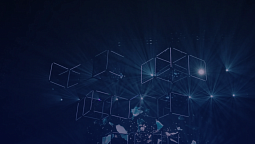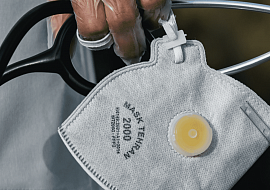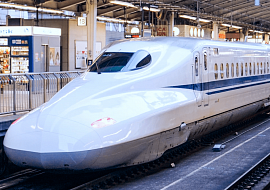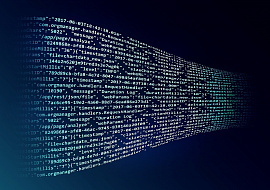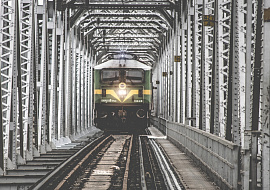Does the Future of IoT Development for Industrial Use Belong to AI Applications?
The thorough introduction of Artificial Intelligence (AI) into the Industrial Internet of Things (IIoT) is evidenced by the emergence and fast spread of such concepts, as Industrial Artificial Intelligence and Artificial Intelligence of Things. These concepts are far from purely theoretical research that may be deployed somehow in the future. The first concept that describes the application of AI for the industrial environment, had appeared after a range of successful business cases, such as AI-based predictive maintenance, or AI-driven warehouse machines. As early as today, we notice that 91% of leading organizations are already investing in AI activities; and the capital-intensive industries benefit the most from AI implementation.
Artificial Intelligence of Things, in fact, is a special case of Internet of Things application, introducing AI to enhance IoT-enabled operations and analytics. Although there is no common concept of Industrial Artificial Intelligence of Things, we witness that we can get the most out of Industrial Artificial Intelligence when implementing it within the IoT ecosystem, while Artificial Intelligence of Things reveals its full potential for industrial applications. We have already noticed how AI processes the data captured and filtered by IoT devices, which helps industrial enterprises spot the subtlest patterns in their machines’ behavior or decline in sales to build a competent business strategy. Thus, if you are going to strengthen the foundation of your manufacturing processes with AI and Enterprise IoT solutions, you need to know more about how these technologies work and how to maximize the benefits of their cooperation. Is it possible today? Surely.
IoT Development: How AI Can Be Applied to It?
You hear about AI in multiple contexts, but what actually is it? To highlight the benefits of this technology for IoT development, we can define AI as a software technology capable of responding to triggers and issuing a reply relatively enough complex set of inputs, looking for connections between them. In other words, AI can solve complex creative and analytical tasks that traditionally were delegated to a human.
For the industry, it firstly reveals the ability to incorporate as many factors as possible to level up decision-making. AI applications can be deployed within the IoT ecosystem to accomplish the following goals:
Deployed in the control loop, an AI application is able to process a substantial number of inputs per unit of time, detect less obvious correlations between them, and thereby correctly respond to a complex request. It turns out such a smart automation. For example, a neural network deployed in the cloud is able to analyze data from sensors and track unprinted areas of the canvas in order to instantly stop the machine, preventing delivery of defective production to the client. It is surprisingly pleasant that AI-based solutions here became cheaper than alternatives due to the opportunity to save on camera quality. With training over time, the neural network became able to recognize defects from an image of rather average quality, which reduces the requirements for cameras and, therefore, the cost of the entire solution.
The application of AI for advanced analytics does not concern either data collection or its primary processing, but it serves the high-level value of the Internet of Things – improving strategic planning. Receive data about the production processes, including date from: machines, conveyors, energy utilization, workforce efficiency, environmental conditions and so on. By receiving this data, you can track changes with high accuracy to define the drawbacks of business processes and optimize them in a targeted manner. Since this application does not require real-time responses, we can collect as much data as possible to increase the accuracy of analytics and predictions.
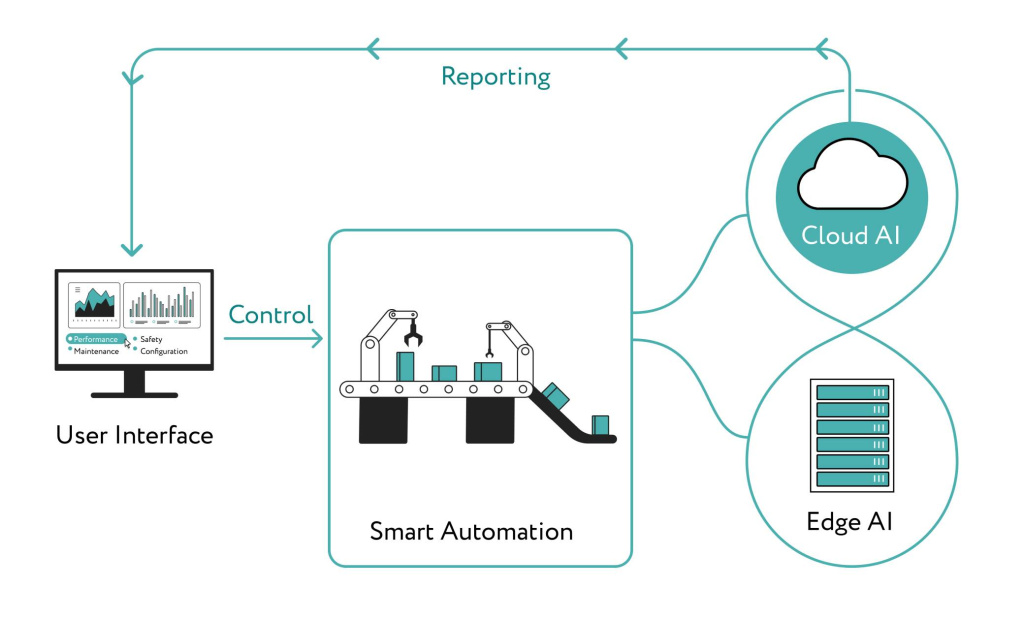
Some forms of AI are generally deployed within Industrial IoT applications. However, to achieve the impeccable results we mentioned before, it’s efficient to utilize machine learning technology, which resulted in improvements in the application over time. Standardization, economies of scale, wide automatization, and other signs of efficient production are heavily supported by machine learning solutions. Thus, we can expect the AI embedded in IoT development to continue being woven into the major production processes in the coming years.
IoT Development: High-Quality Data as a Key
Machine Learning applications might be very sophisticated and accurate since they are targeted to improve themselves. To launch the AI, you simply need the source of knowledge and a set of rules, while the value of its outputs directly depends on the quality and applicability of the initial data.
There are Industrial IoT solutions that allow AI to gain appropriate data to maximize its high-level value. It is possible through the following qualities of the IoT-captured data:
-
Custom nature. For the AI analytical model to produce accurate predictions, it should be trained on data that reflect the real condition of the operation environment. Since IoT devices capture the data directly from the field, the AI tool would be created exactly for your environment considering its specific details.
-
High quality. IoT sensors provide precise data collection on vibration, sound, inclination, humidity, and so on, which then can be filtered at the edge before transferring to the cloud.
-
Redundancy. The Internet of Things ecosystems support various network topologies and communication protocols to collect data even from difficult-to-reach areas. This eliminates the need of fill in the missed data and provides a comprehensive control.
As per research, about 30% of AI implementation in production is related to condition-based and IoT predictive maintenance of production equipment. It also means that such factories also deployed IIoT solutions to provide a precise data-capturing. To avoid false-positive results and subsequent extra-spendings, they should be extremely high-quality.
IoT Development: Feasibility of Its Convergence with AI in the Near Future
As we have already noted, in one form or another, AI is present in most IoT applications. The question boils down to how realistic it is to scale the complexity within the available technical capabilities. Therefore, it requires solving practical issues not only in the deployment of AI-enabled IoT ecosystem now, but also in view of future scalability needs for AI to cover more tasks within a production. Practically, it refers to reducing delays for real-time operations and increasing the data quality for deep analytics.
The issue of system throughput is being resolved strategically, starting with the competent building of an Industrial IoT architecture to support AI tools. The key is in the proper distribution of computing capabilities between the edge and the cloud layers of the IoT ecosystem. For instance, by placing AI applications in the cloud, and all pre-processing and filtering tasks are placed in the edge, your system gains more flexibility and sustainability. Even more flexibility, economical scalability, and improved resiliency come from the hybrid cloud + edge model.
The valuable option is to trust the control capabilities of the cloud and deploy AI-enabled real-time operations in the edge. This demand is due to the fact that the edge can overcome cloud bandwidth limitations. Also, it allows for addressing difficulties with Internet access and provides additional protection for sensitive data. AI at the edge can perform its own operations and transfer actions via multiple protocols. It is particularly relevant for time-critical automation solutions and for highly distributed systems transferring a substantial amount of data within. The application of Machine Vision in the edge is also gaining momentum. Anyway, reliable IoT infrastructure requires a collaboration between the edge and the cloud resulting in an optimal distribution of computing power for every particular case.
This sounds tempting but what’s the issue price? Although 54% of businesses reported savings from AI application, its implementation and use are still considered a rather costly undertaking, which sometimes slows down the process. Neural networks need to be constantly retrained to keep them up to date. Surprisingly, a hybrid environment also might help address the issue of costs. Less often, it can be considered the option of a complete migration to the local environment. It might be relevant, for example, for resource-intensive deep learning applications. It is crucial to analyze and select only the necessary parameters to include in the analytical model since the overall price of AI implementation directly depends on its size.
The good news is that AI and IoT development reinforce each other. Having high-quality data from IoT devices the final solution becomes more efficient and cost effective.
Summary. IoT Development – Cooperation with AI Apps
-
The chances that the cooperation of AI and Industrial IoT will become the future of manufacturing are really high. This will become especially noticeable with an increase in the availability of technologies, and a decrease in the cost of IoT development.
-
AI can be in the control loop of an IoT application, providing fast and accurate real-time operations, and beyond the control loop, providing deep analytics for the collected data.
-
AI and IIoT technologies reinforce each other since the provision of high-quality data by IoT devices allows for the most accurate prediction made by AI.
-
Having high-quality data from IoT devices the final solution becomes more efficient and cost effective.
-
To have your AI-enabled IIoT solution optimized, it is necessary to competently distribute the loads within the IoT ecosystem between edge and cloud.
Want to strengthen your production with an AI-based IIoT solution? PSA as practitioners always keep a finger on the pulse and are ready to approach the implementation of any innovation from a practical view, having studied all the pros and cons for your business. We’ll be pleased to get acquainted.

